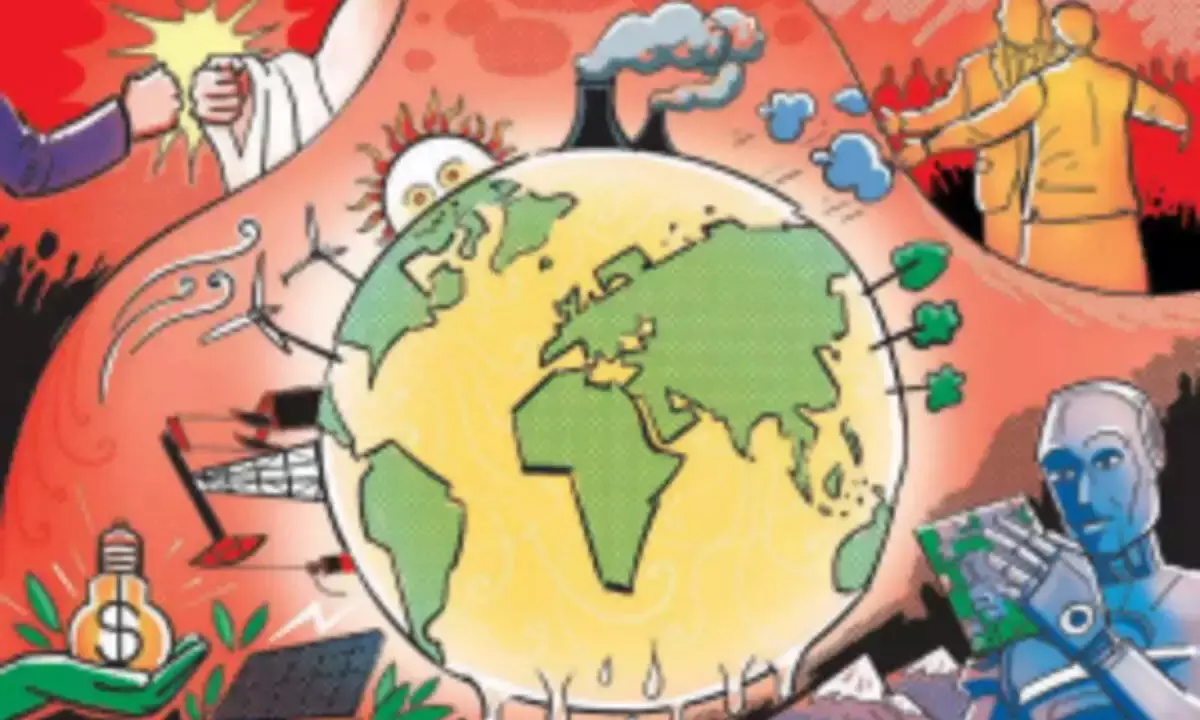Counteract west’s ‘most polluter’ rant at COP-28

As part of The Competitiveness Roadmap for India@100, India has based its sector-specific roadmaps on the prosperous growth to match social progress; shared across all regions, to be environmentally sustainable, and to be solid in the face of external shocks.
As part of The Competitiveness Roadmap for India@100, India has based its sector-specific roadmaps on the prosperous growth to match social progress; shared across all regions, to be environmentally sustainable, and to be solid in the face of external shocks. A nation of billion people with the most number of poor people in the world, India’s GDP is forecast to reach $ 5 trillion by 2027, becoming the world’s third-largest economy.
Set for a scorching pace, India faces west rant for being ‘world’s most polluter’ and calls for cutting its carbon emissions, no matter how far it is already addressing sustainability in ensuring equitable and inclusive development to fight the climate crisis. Between 2005 and 2021, India pulled out 415 million people from multi-dimensional poverty. The 2022 report of the UNDP estimates 16.4 per cent of population in India (228.9 million people in 2020) is multi-dimensionally poor. It also classified an additional 18.7 per cent as vulnerable to multi-dimensional poverty (260.9 million people in 2020). As such, the twining of development and environmental sustainability should form core policy and action in India.
India, for its part, set itself a non-fossil fuel energy capacity of 500 GW by 2030, reducing CO2 emissions by 1 billion tonnes by 2030, and paving the way for achieving a net zero emission target by 2070. Shifting to green economy requires enormous funds and offsetting loss of millions of livelihoods, considering mines, power plants, user industries, not to mention huge coal-based tax revenues for Centre and States. India is not an exception, many countries figure in the same category. Amid forecasts that global average temperature in 2100 would rise to around 2.1°C above pre-industrial levels, a dilemma stares the world in face in view of increasing needs for coal and crude. The COP-28 meet slated to be held in Dubai must deliberate on this predicament of developing nations.
Climate Action Tracker says if India gives up plans for new coal-fired power plants, it could become a global climate leader with a “1.5 degree C compatible” rating. But it is feared that even by 2050, 65 per cent of India’s energy needs will be met by fossil fuels. But it is important India leads the green transition. Also, oil price hikes threaten to derail economy.
The PM had rightly pronounced; When India grows, the world grows; when India reforms, the world transforms. As rapid phase out of coal is not an option, India must push for more solar and wind energy; battery storage is the main impediment. Also, it should pursue energy efficiency of appliances, green building, carbon budgets for industries, cleaner emission standards for vehicles etc. After achieving 10% ethanol blending in fossil fuels, India targets to advance 20% blending to 2025 from 2030. More can be achieved on this front.
If the world’s climate is not to spin out of control, countries, especially the rich, should wake up to the extreme weather events. India should push the nations at the Dubai summit to meet the targets to keep temperature rise to 1.5 degrees C. Rich nations hyperventilating about India being the largest polluter must be made to mind that India’s per capita power consumption is 1/8th of US and 1/14th of Germany etc. They should be pressed on technology transfers and boosting the climate fund. India’s phase out of 25 GW of coal-based plants must be on its own terms.

















